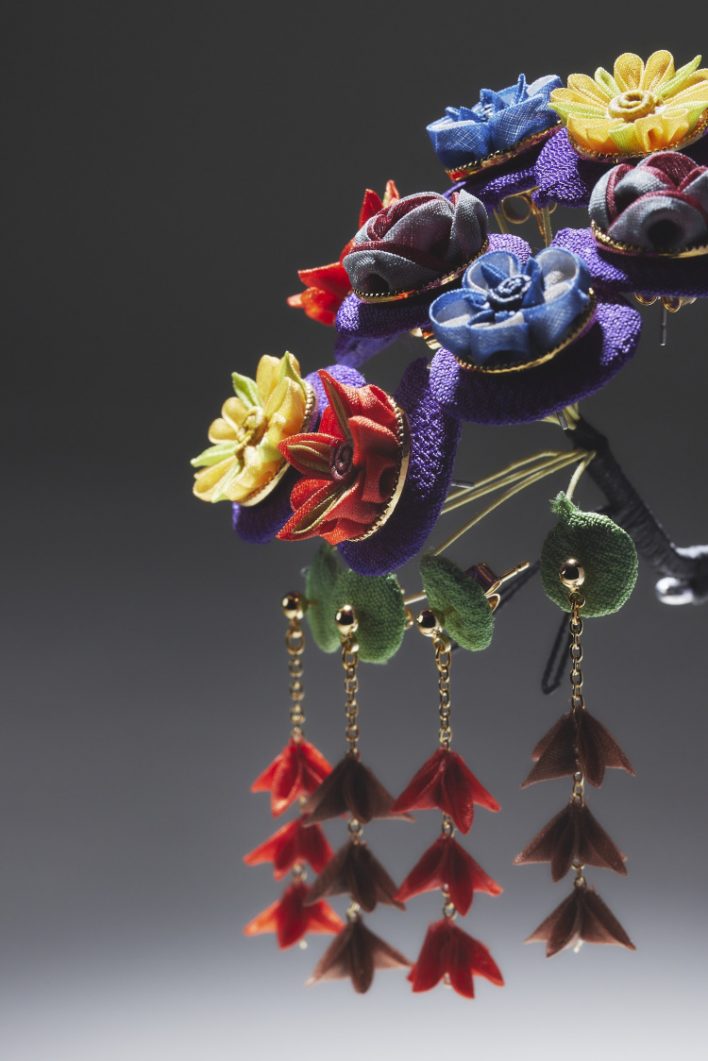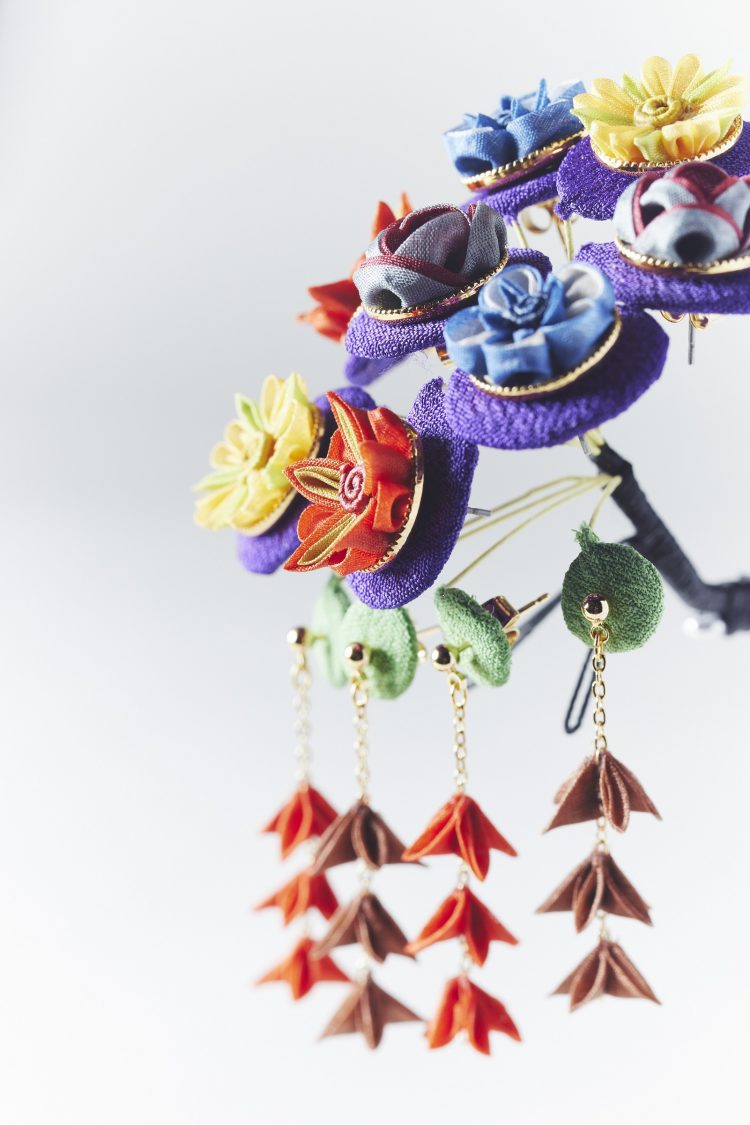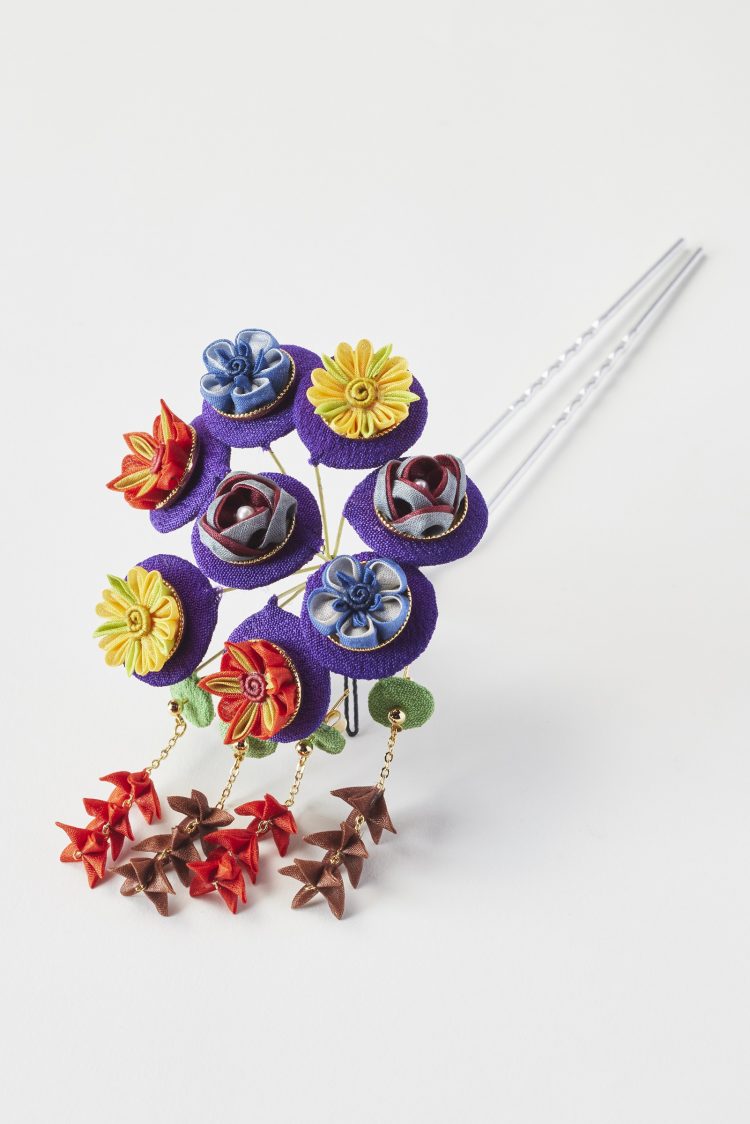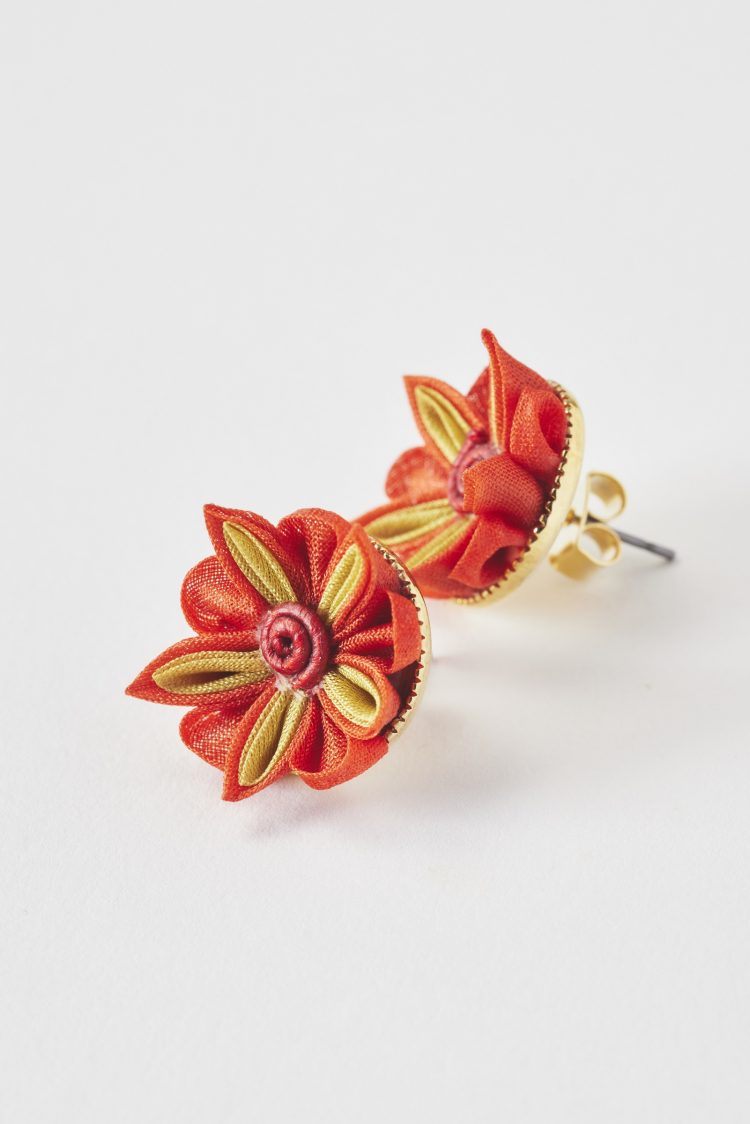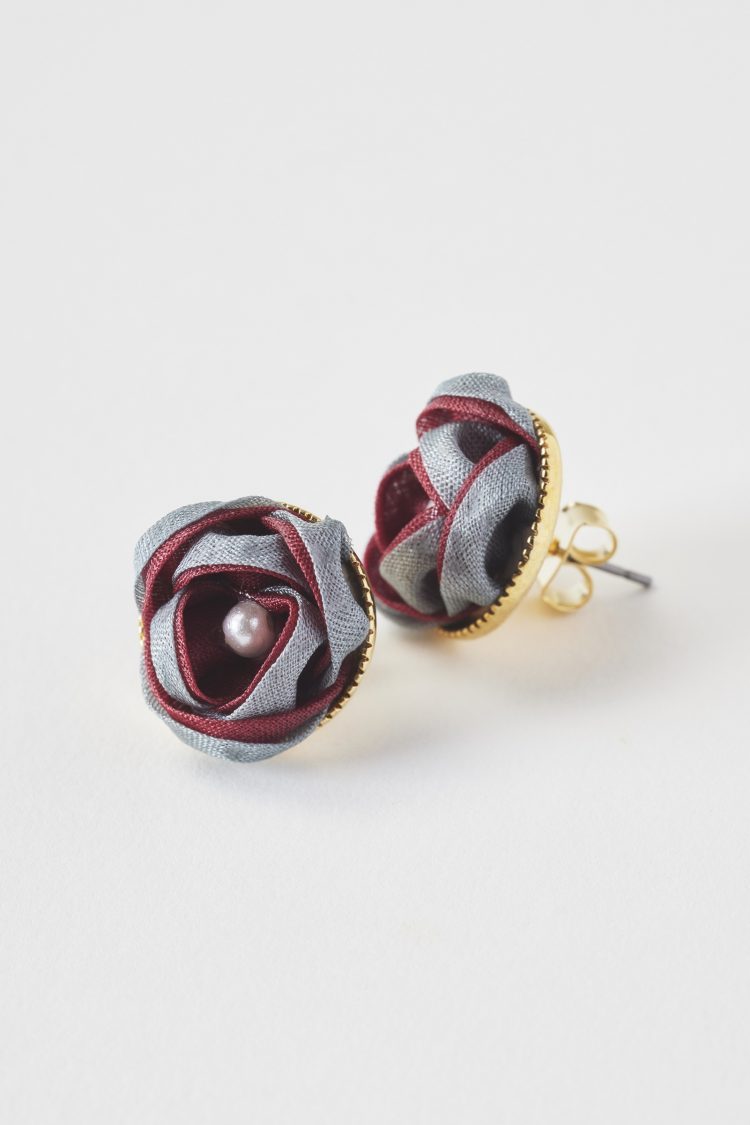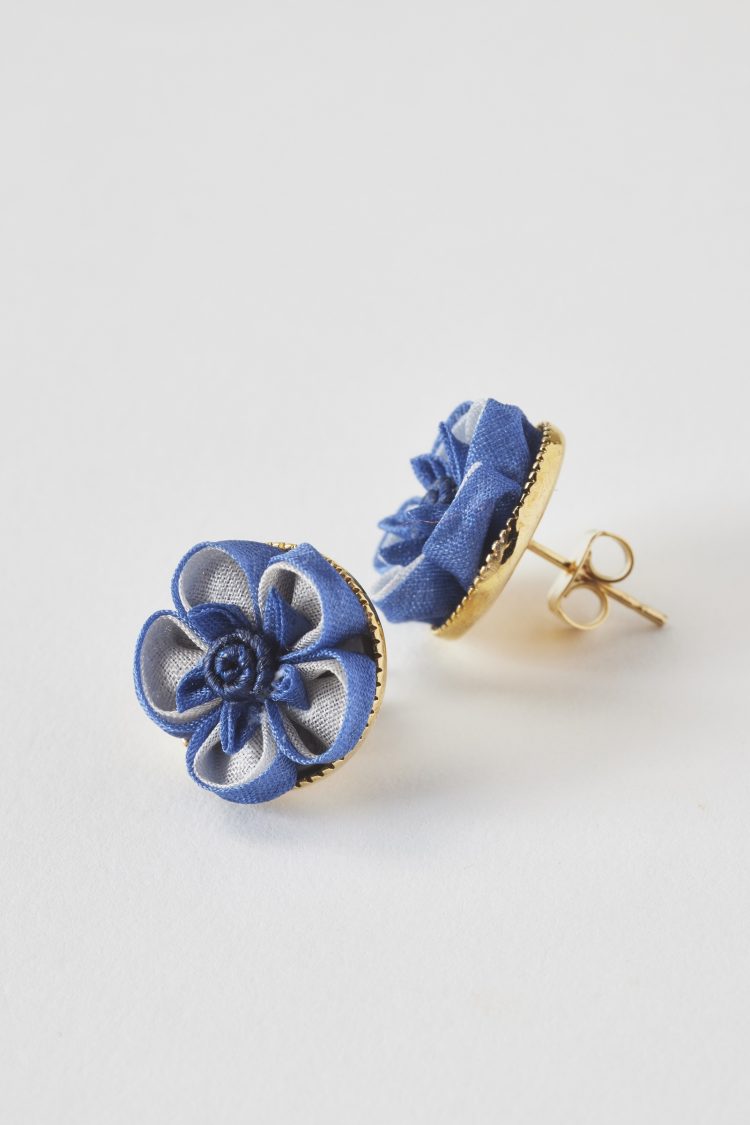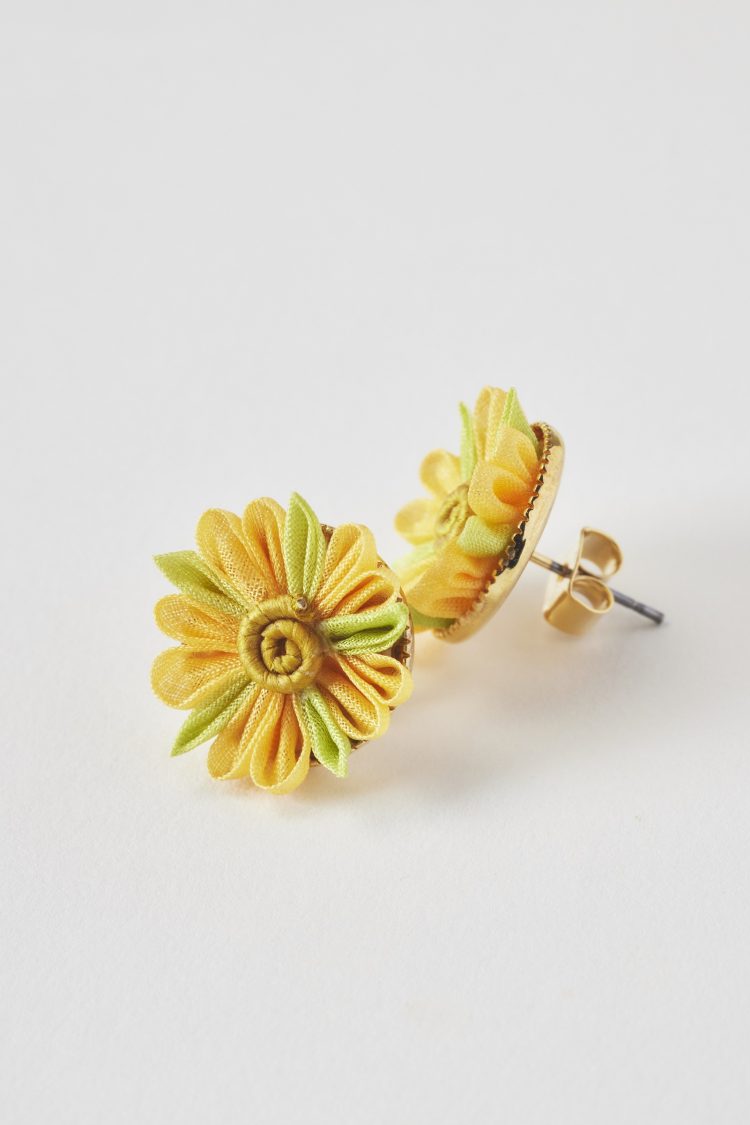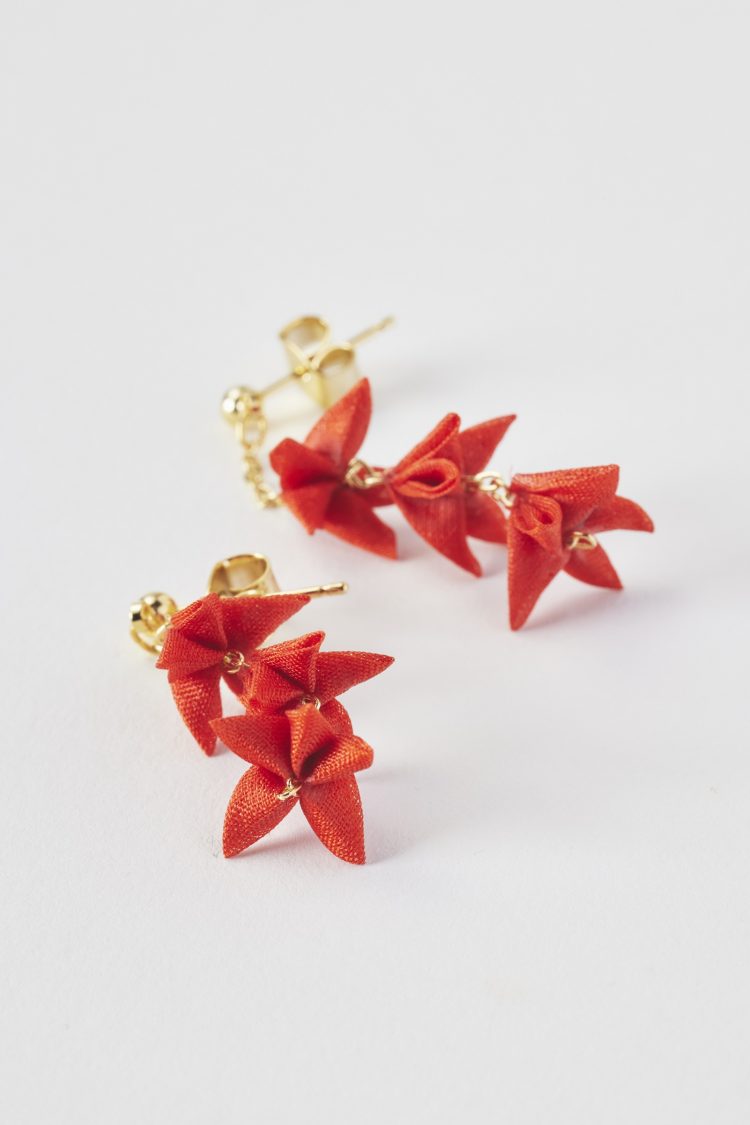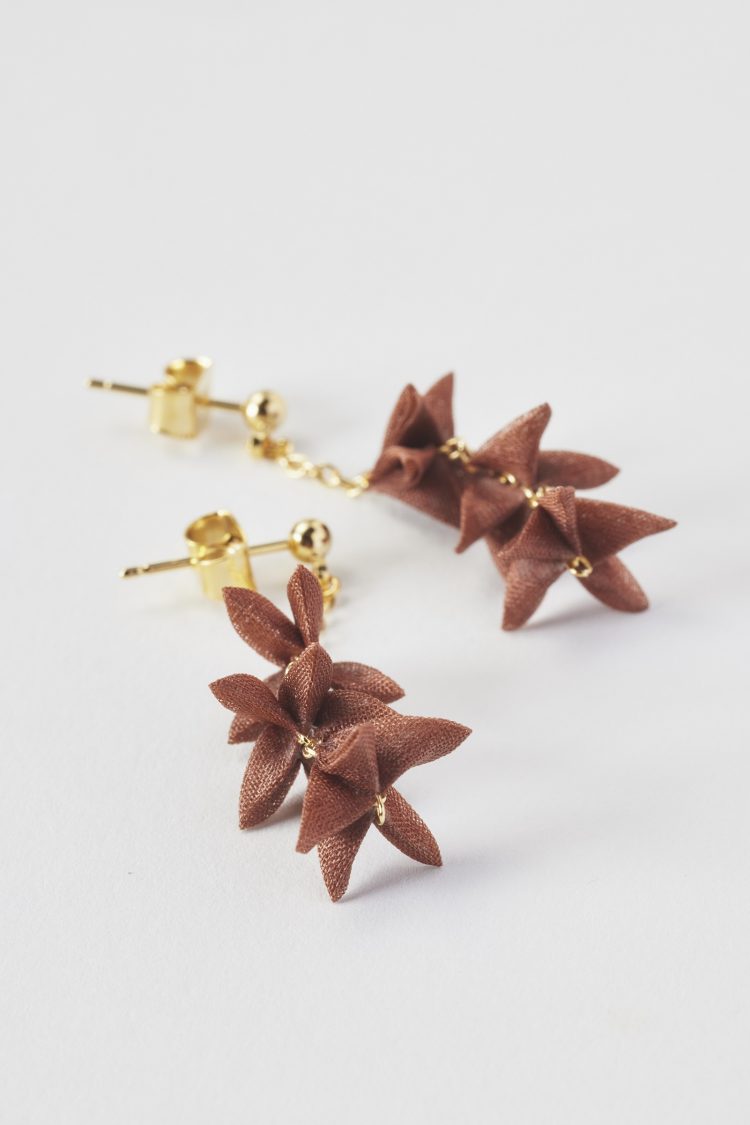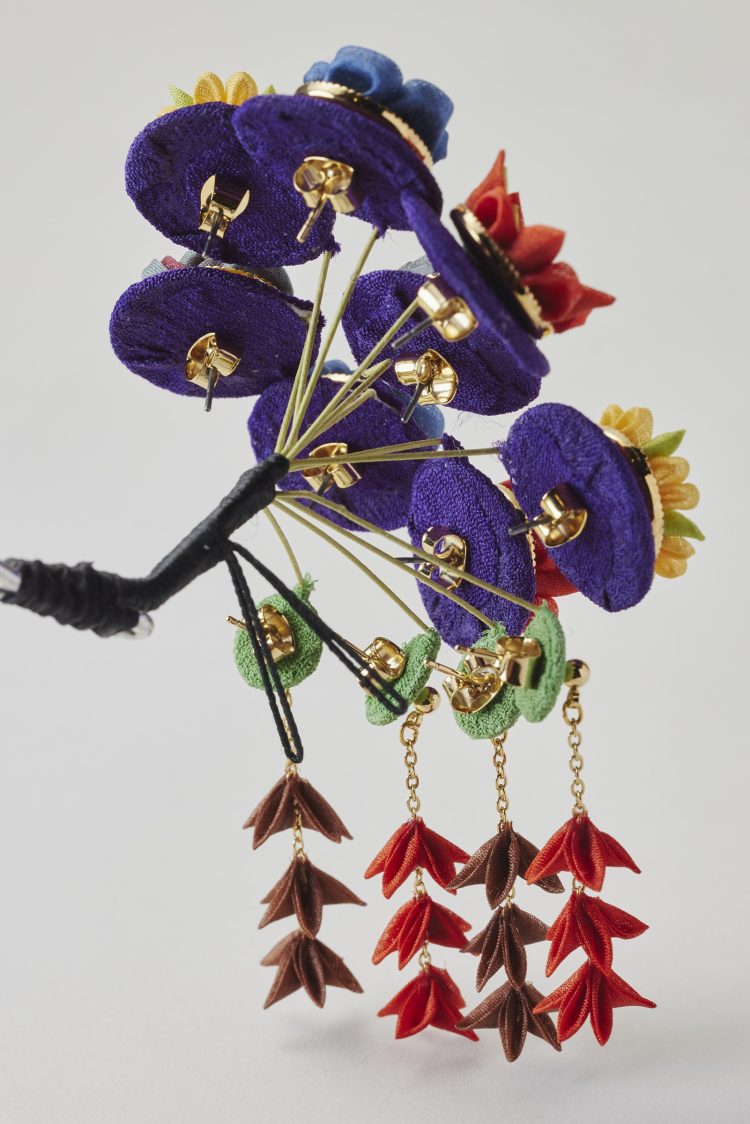Pierce de Kanzashi
13 Edo Tsumami-Kanzashi (Ornamental Hairpins)Six sets of earrings are imbedded onto a kanzashi
(traditional hair pin) to create an accessory
that can be enjoyed in two different ways
: Pierce de Kanzashi.
They can also be used as indoor decorations,
which means each item has three distinct roles.
The flower petals that decorate the kanzashi are
folded pieces of silk
that are formed using the tsumami (pinching) technique.
The fabric used for tsumami is a soft,
lustrous silk known as habutae.
This is a traditional woven fabric representative of Japan,
and it is said that “the charm of silk starts
with habutae and ends with habutae”.
Bolts of habutae seven to eight meters in length
are cut and then boil-dyed in large cauldrons.
The main feature of chemical-based dyes is
the sharp colors they produce. Contrarily,
plant-based dyes produce soft, tranquil tones.
The vibrant and celebratory colors produced by
chemical-based dyes are used for
children celebrating their shichigosan
(festival honoring the third, fifth and seventh birthdays of children).
The soft, harmonious colors of plant-based dyes are
more suited to adults.
The dyed fabric is known as shinshihari,
and it is stretched out on bamboo spars and
then hoisted onto the roof and left
to dry in a style known as araihari (wash and stretch).
While the fabric is stretched on the spars,
it is brushed over with a light coat of starch. Once dry,
it is cut into large and small rectangular shapes to
produce the pieces used for tsumami pinching.
A thin coat of starch is spread over a board
and the tsumami pieces lined up together.
The ones that curl up on the edges are known as marutsumami,
and the ones that remain flat are known as kakutsumami.
The pieces are then transformed into different sizes
and tsumami styles depending on what they will be used to create.
An experienced craftsman is able to perform this technique
on around one-hundred pieces of habutae every thirty minutes.
Once the starch has worked its way into the habutae pieces,
the condition of each piece is checked
and matching shapes placed on blocks.
The degree of drying differs between pieces depending on
the length of time they have been dried,
so they do not always match up.
The shapes will also differ if the starch is added to unwanted areas.
Gathering together two or three pieces and placing them
on the block is the quickest way of ensuring the best results.
Once all of the parts have been placed on the blocks,
they are then left to dry for between 12 and 24 hours,
and then sewn together with thread to create the shapes.
Not counting the time for starch to dry, tsumami is a quick craft,
only requiring between 60 and 90 minutes to complete.
And then, the neat tsumami formed
by the hands of the distinguished craftsman
will gently open their petals at ear level.
- Pierce de Kanzashi
- Materials: Silk, brass
Size: L200mm × W80mm × T70mm
Types: Color variations
*The information on this site is as of May 2024.
*Sizes, colours and shapes of the actual products may differ slightly as they are
handmade.
*Product specifications and suggested retail prices may change without prior notice.

